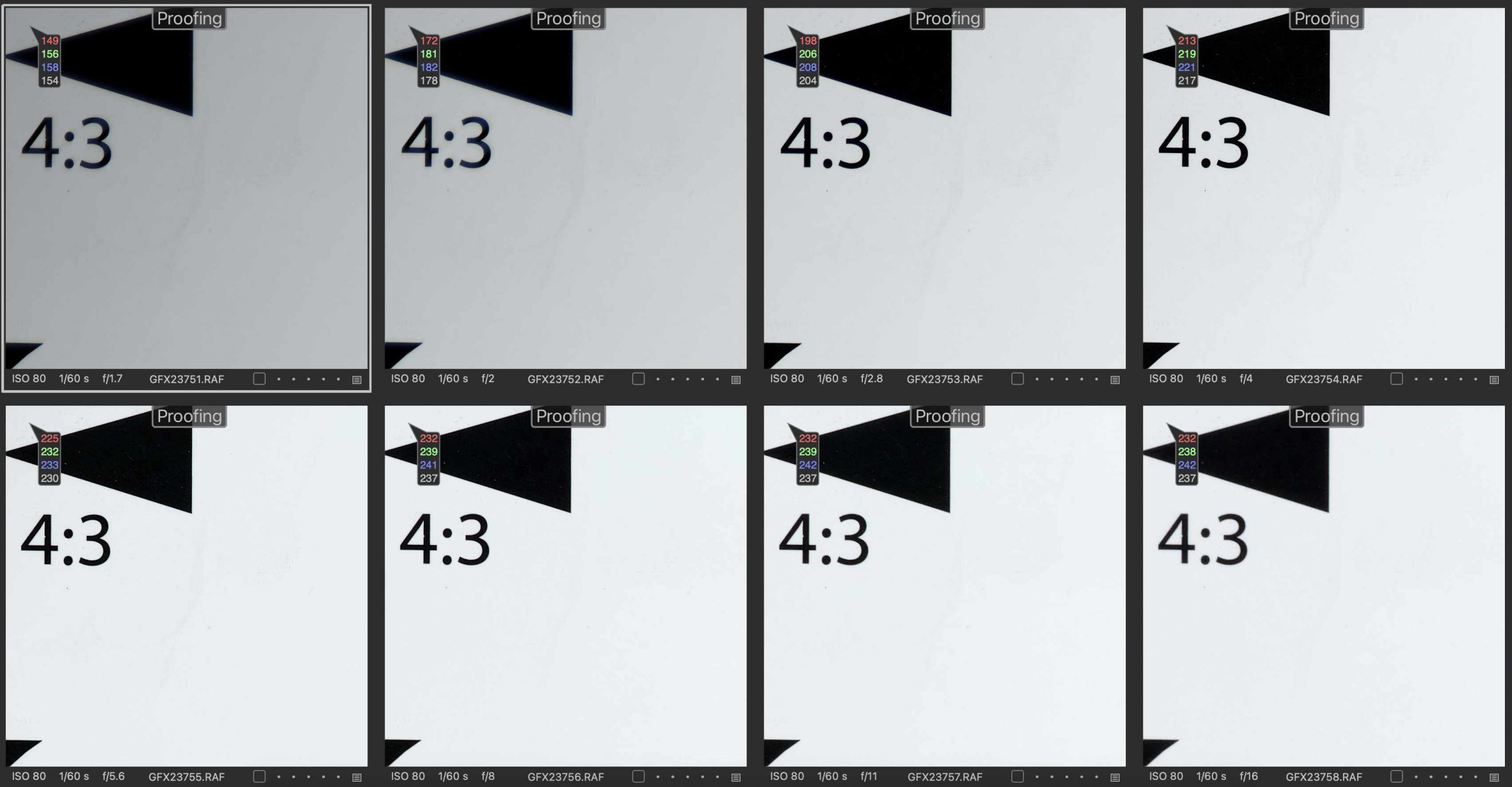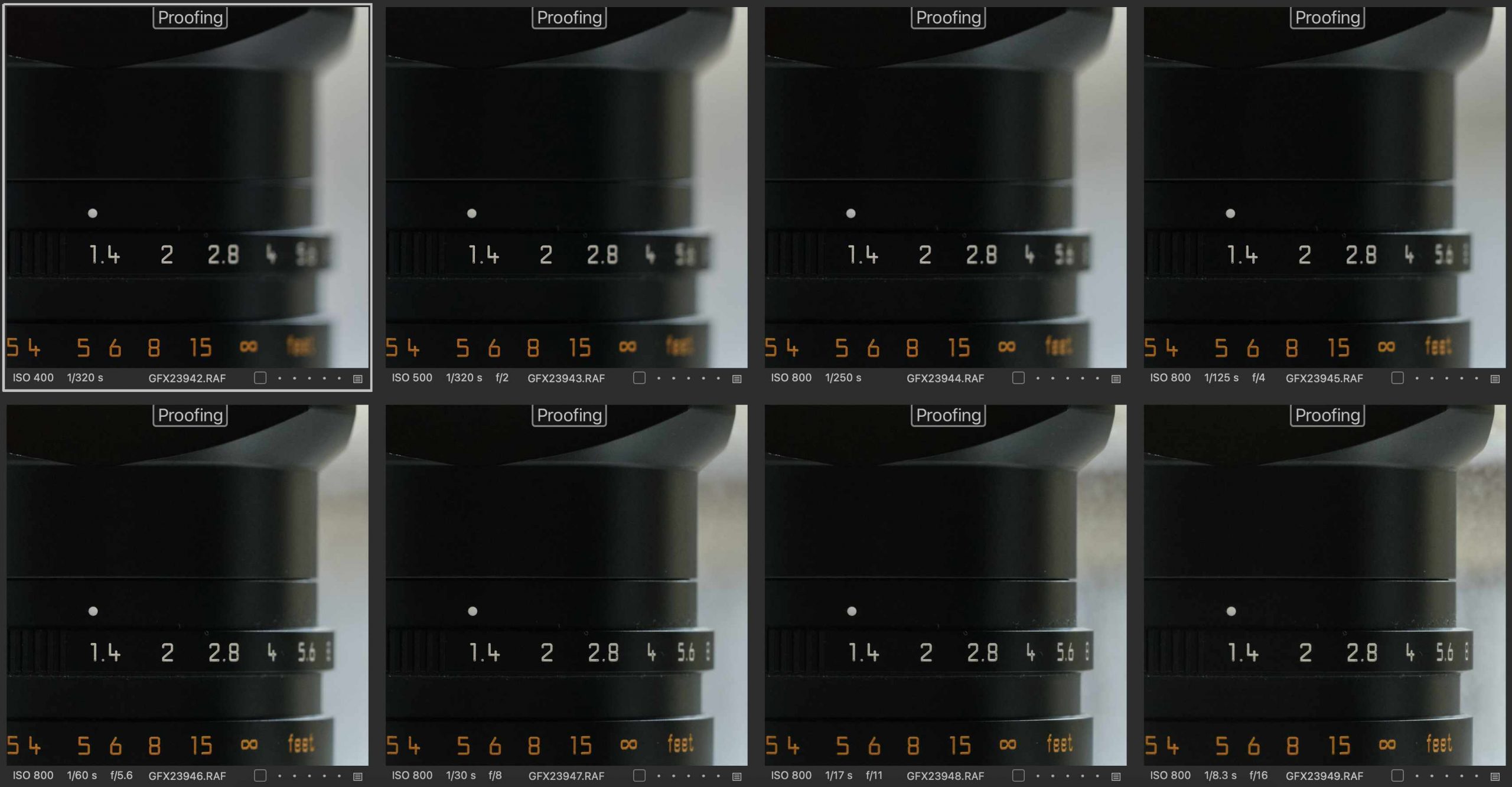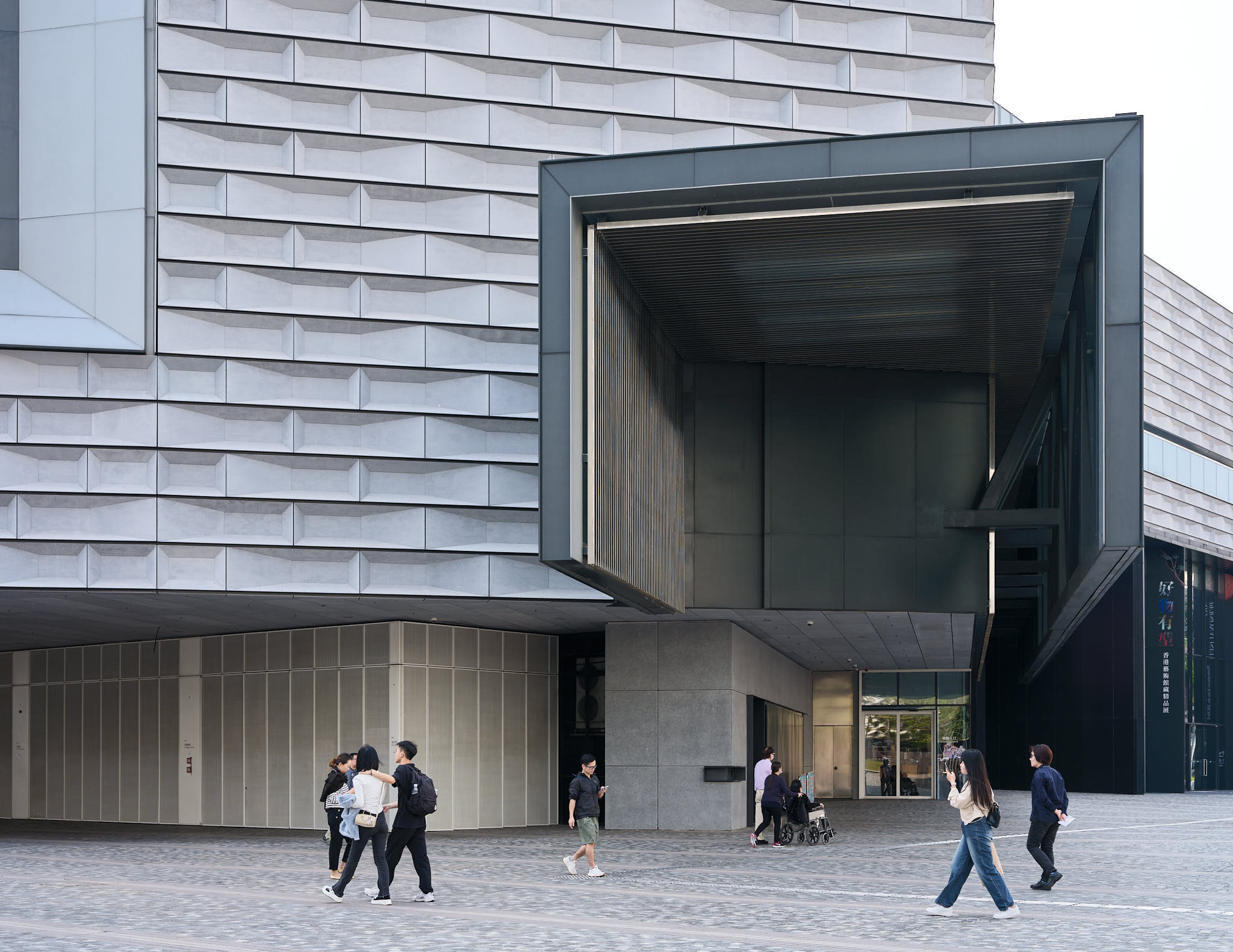The Fujinon GF55 F1.7 (GF55) is a lens that Medium Format Fujifilm GFX users have been eagerly anticipating. When Fujifilm launched the new GFX100 II alongside the GF55, I couldn’t resist the combination special that included a free Lexar 512GB CF-Express Type B card.

The GF55’s field of view is equivalent to that of a Full Frame’s 40MM lens. The depth of focus at F1.7 is equivalent to what you would expect from a Full Frame lens at F1.3. There’s always something very special about images made with a wide-angle, wide-aperture lens. One of my favourite lenses of all time is the Fujinon XF16 F1.4, a lens that would be equivalent to a 32MM F2.8 on the GFX.
While the GF55 is not as nearly as wide, it does start to show some of that wide-angle, shallow depth of focus magic. It also disappointingly shows some of the less desirable characteristics of some of Fujinon’s other wide-angle, wide-aperture lenses. I’ll get to that a bit later as I think there’s still a lot to love about this lens.
Disclaimer: As with all of my reviews, the GF55 F1.7 and GFX100 II used in the review were purchased at the prevailing market price from an Authorized Fujifilm Retailer. In this instance, it was from JD.com in Mainland China from the Fujifilm JD Flagship Store. Fujifilm and JD.com were not involved with this review.

Build Quality
Like all Fujinon GF lenses, the build quality is superb, with a great feel in the hand. As with all GF lenses, the GF55 has weather-sealing and the hybrid metal/rubber construction that keeps the lens solid, while still being relatively light. Just like the GF80, I do find my GF55’s aperture ring isn’t as “clicky” as my other GF lenses. I wish the detents were more positive and the ring had more tension between detents. Other than that minor quibble, the lens is perfectly built.

One aspect that’s consistent across the Fujinon GF line that I think needs improvement is the lens hood. There’s nothing wrong with them, regarding their utility, but they don’t match the premium quality and feel of the rest of the lens. Plastic makes sense from a weight perspective, but when you compare the plastic thickness to Sony or Sigma for example, the Fujinon lenses’ hoods are just too thin and don’t hold their shape under pressure.

Size & Weight
If you already own the GF80, you then know exactly how the GF55 will feel on your camera. They were clearly designed at the same time, with similar weight, size and build. In the GF80 review, I stated, “this is where the GF80 really shines” and that’s equally applicable to the GF55. It’s the perfect size and weight for travel photography.
The GF55 weighs only 780g, that’s 15g less than the GF80, and is only 99MM long. The weight is distributed very well and is easy to carry around with the excellent grip on the new GFX100 II. The GF55 has been glued to my camera since I got it. I’ve handed the camera/lens combination to friends and none have complained about the combined size or weight.

Contrast & Resolution
The GF55 is super sharp in the centre from wide-open at F1.7 through to F8. From F11, diffraction starts to soften the image. In the corners, peak sharpness comes at F4 and F5.6, and matches the centre. At F1.7, the corners are still very good, but not a match for the centre at the same aperture.
Overall, the GF55 has excellent centre performance, but needs to be stopped down to F4/F5.6 to reach peak sharpness across the sensor. Considering how small and light this lens is, it’s a great performance.




At the Minimum Focus Distance, the lens has excellent performance in the centre. It’s sharp from F1.7 right through to F8. There’s very little difference between those apertures which is a fantastic result.

Distortion & Aberrations
Everything until now has been better than expected, but something had to give. Just as we saw with its GF80 twin, there had to be some compromises to reach this size and weight, and in the GF55’s case, it manifests primarily in aberrations and a bit of mild distortion.

The corners have noticeable tangential astigmatism where point light sources appear to take on the appearance of “wings”. I used the lens extensively for weeks before noticing it in a set of images taken of The Bund in Shanghai. It’s at its worst wide-open and then gets better until becoming unnoticeable at F2.8.
It’s disappointing for me because I wanted to use this lens for night scenes in travel photography. These night scenes often have distant streetlights or building lights that if placed near the edges will have the ugly “wings”. Having to stop down to F2.8 or F4 negates the benefit of the wide aperture; I might as well use the GF45 F2.8 or GF32-64 F4.

Distortion is not bad for a small wide-angle, wide-aperture lens. There’s a bit of barrel distortion at far distances and very minimal barrel distortion at the Minimum Focus Distance. Both are easily corrected using your favourite RAW convertor’s “Manufacturer’s Profile” setting. I used to be a stickler for optical distortion correction, but I changed my tune after using the Leica Q, which had shocking amounts of distortion.
The Leica Q lens is wider than 28MM; Leica uses extensive software correction and then crops the edges off to reach the expected field of view of a 28MM lens. That camera and lens combination is universally loved for its incredible sharpness wide-open. This experience helped me move on from my traditional ways of thinking. This is all to say that the distortion on the GF55 is minimal, and what there is, is easily corrected in software.


Bokeh
I love bokeh (perhaps even more than Lok!) and the GF55 delivers beautifully creamy and smooth bokeh. As with the GF80, there’s some mechanical vignetting in the corners which results in the cats-eyes bokeh. The mechanical vignetting, along with the wide-angle, in distance subjects, can sometimes give a hint of that swirly bokeh more common on vintage lenses.
With the intense sharpness of this lens across the sensor at F1.7, it makes the bokeh stand out even more, with a very sharp transition from in-focus areas to out-of-focus. This creates the intense 3-dimensional allusion that we all love so much. Sometimes, the effect is so great it makes the subject appear to be photoshopped into the image.

There’s a tiny amount of outline in the bokeh, but it’s so minor that it’s not an issue. The additional aperture blades help keep the bokeh nice and round with the blades barely noticeable. I love what Fujinon did with this lens in how they engineered the bokeh appearance.


Focus Performance
For those wondering, yes, the focus mechanism seems to be the same as used in the GF80. It has the same noises and clumsiness, but it appears that the mechanism is moving less or lighter glass as it’s more than twice as fast (or perhaps, given the lethargic nature of these two lenses, I should say, half as slow).
In real life use, the lens, when paired with the GFX100 II can keep up with slowly moving humans and very slow-moving animals. It’s nowhere near as bad as the GF80, which requires thought to get a high proportion of keepers. In summary, it’s not the worst lens in the lineup, but it’s not one of the fast focusing lenses like the GF50, GF32-64 and GF45-100.

One may wonder why the GF110 with its Linear Motor tested slower than the non-Linear Motor GF55. I should note that moving the focus group from the Minimum Focus Distance to Infinity is only one test. The other test would be how quickly the lens reacts to small changes in focus (accelerating and decelerating the focus group in rapid succession). This is where Linear Motor lenses really shine and where the GF110 far exceeds the GF55 and GF80. Unfortunately, I don’t have a test setup capable of measuring that.
| Lens | Average of 10 times ~MFD to ~Infinity (s) |
| GF55 | 0.52 |
| GF110 | 1.03 |
| GF80 | 1.22 |
Usability
Because of its diminutive size (for Medium Format), this lens is supremely usable. It has quickly become my go-to lens (sadly pushing the GF80 to the side) for when I want to walk around a city and capture some images. The focal length is perfect to capture environments and works especially well as an environmental portrait lens where you want to include people with some additional context.
I thought I would sell the GF45 after getting the GF55, but instead, I ended up selling the GF63. I found those two lenses overlapping more than I expected. The GF45 has a much wider field of view, and its stunning image quality is what made me fall in love with the GFX system (that and the GF110!) in the first place.


Conclusion
We waited a long, long time for a semi wide-angle, wide-aperture lens for the GFX system, and Fujinon has largely delivered a gem of a lens. It has stunning sharpness wide open in the center and when stopped down to F4, right across the image. The bokeh is beautiful and looks especially creamy when compared to the razor-sharp subject.
The only downsides to the lens are the distant point light source aberrations at the edges from F1.7 to F2.8 and the relatively slow and noisy focusing mechanism. The aberrations especially bother me and require some thought when using the lens. One great benefit of the GFX system has been that the lenses have been universally excellent. We rarely have to invest time to get to know a lens before using it.

Fujifilm will no doubt sell tons of these lenses, and I can see owners posting beautiful real-world images with them. However, I’m not sure if it lives up to the “new standard for the GFX system” as Fujifilm’s marketing states. I wish they had used a Linear Motor focusing mechanism and found a way to give us fewer aberrations.
As is always the case with lens design, the engineers have to make a number of compromises to achieve their commercial goals. It’s clear that Fujifilm prioritized size and weight for this lens, while trying to maximize image quality. I don’t see it becoming my favourite lens on the GFX system, but I do see myself making great use of it.



I hope you’ve found this review helpful. Please note the images presented in this review were selected to provide a broad range of situations, rather than for their artistic value. More GF55 images can be found in the GFX100 II review. If you’d like a full resolution version, please feel free to reach out below or via the contact form. Let me know if you have any questions or observations. If you own this lens, please share your experiences below.
Never miss a post again, please subscribe to our no-spam mailing list
Discover more from fcracer - Travel & Photography
Subscribe to get the latest posts sent to your email.
Great review thanks. I’m late finding it but can I ask, which lens do you find yourself using most 6 months on from your review – the 55mm f/1.7 or 50mm f/3.5?
Thanks
Hi David. It’s great to hear from you. By far, I use the 55MM more. The images that come from that lens are spectacular. They’re so special and actually reminds me of a Leica 50MM Summilux but with APO levels of resolution. The focus point is super sharp and then it drops off into beautiful bokeh. The 50MM is super fast at autofocus so I use it for when I need that speed. Images are very sharp but don’t have much separation due to F3.5.
Hope this helps. Let me know if you need more info. It’s always great when people comment on posts as Google will rank this site higher. A recent arbitrary, global change that Google made to their algorithms have cut this website’s traffic by 50-80%. There’s no rhyme or reason behind the changes with hundreds of small website owners complaining. 🙁
Hi and great review. I use my 63 for street and landscape work and have considered the 55 to replace it. The 63 is weakest when used for street work due to slow focus and strongest for landscape where slow focus doesn’t matter that much… On to optimization. The 55 advertising and your review seem to highlight its performance at the wide end of the aperture range. Considering landscape use only (I am spoiled by use of 4×5 and 8×10 lenses used at f/45) and my interest in sharp and detailed DOF…. best at f11, f16, f22 (forgetting about the effects of diffraction for now)on GFX, which lens… the 55 or the 63 gives best performance in that range? You said you replaced your 63. If you were landscape only photographer would you have kept the 63? Thanks.
For landscape use, at F11-F22, they’re both pretty much the same as they become diffraction limited at F11+. If you’re looking at F4-F8, I’d give the nod to the GF55, but it’s really splitting hairs. At F2.8, both lenses are great, however as noted in the review, the GF55 at F1.7-F2.8 has aberrations.
Great review !
Thank you!